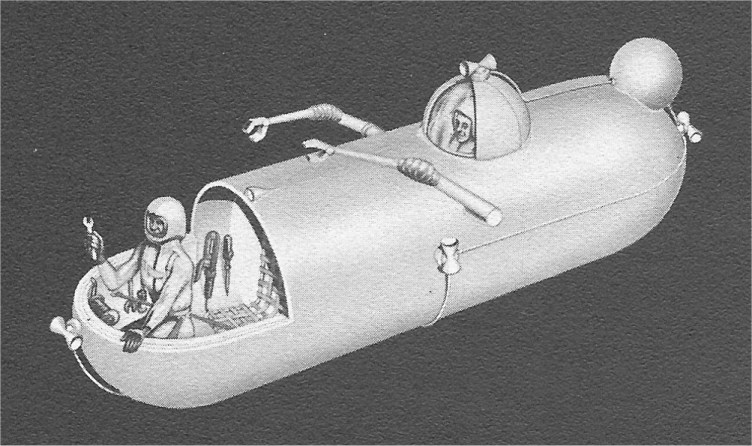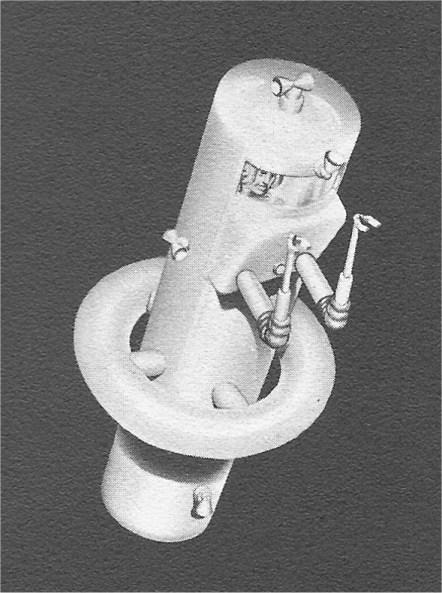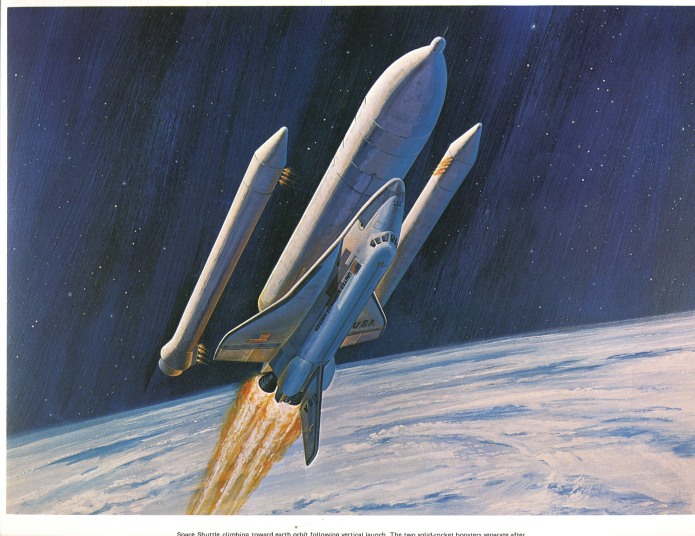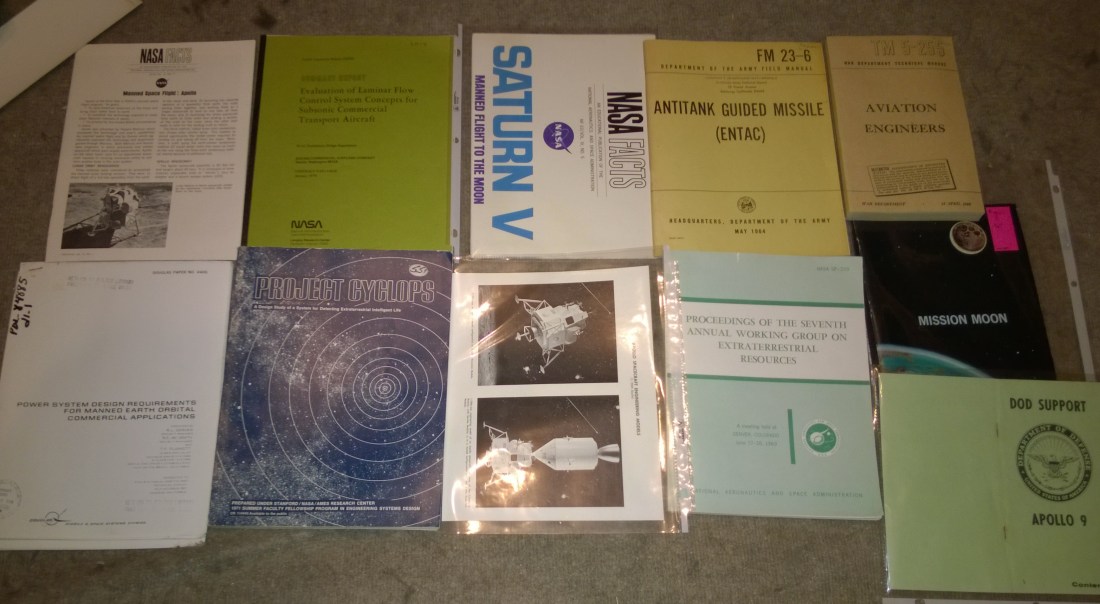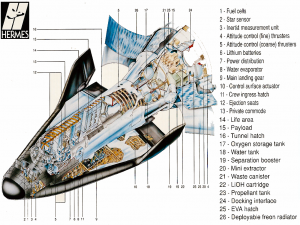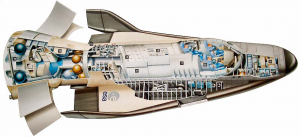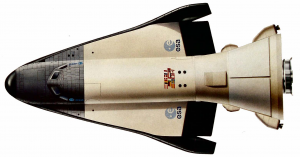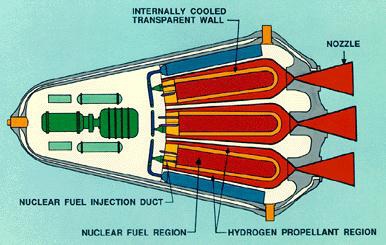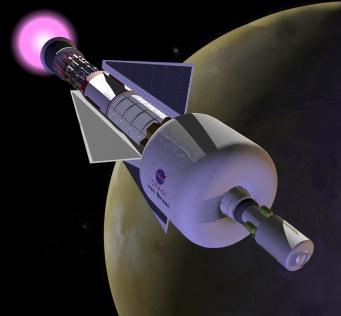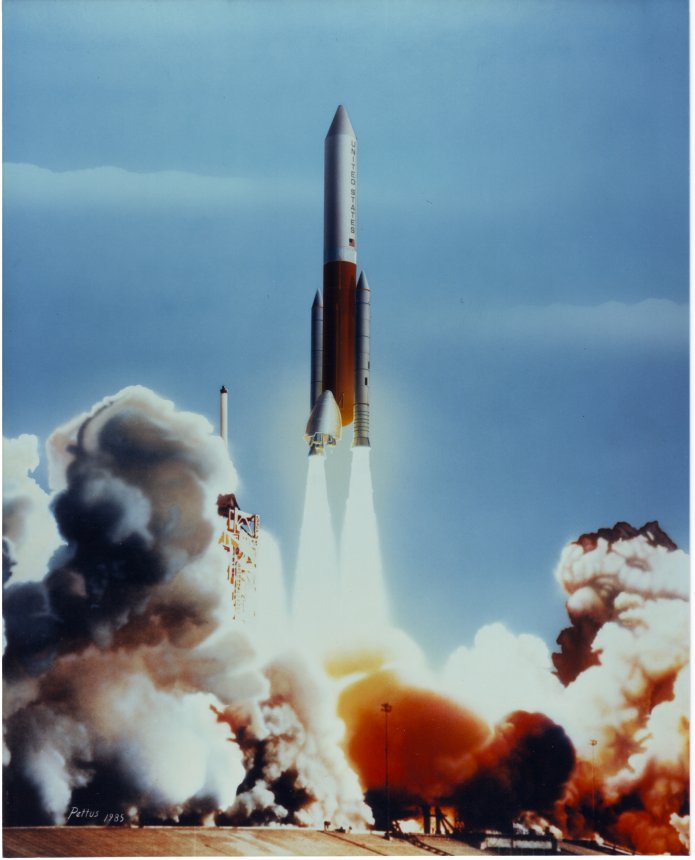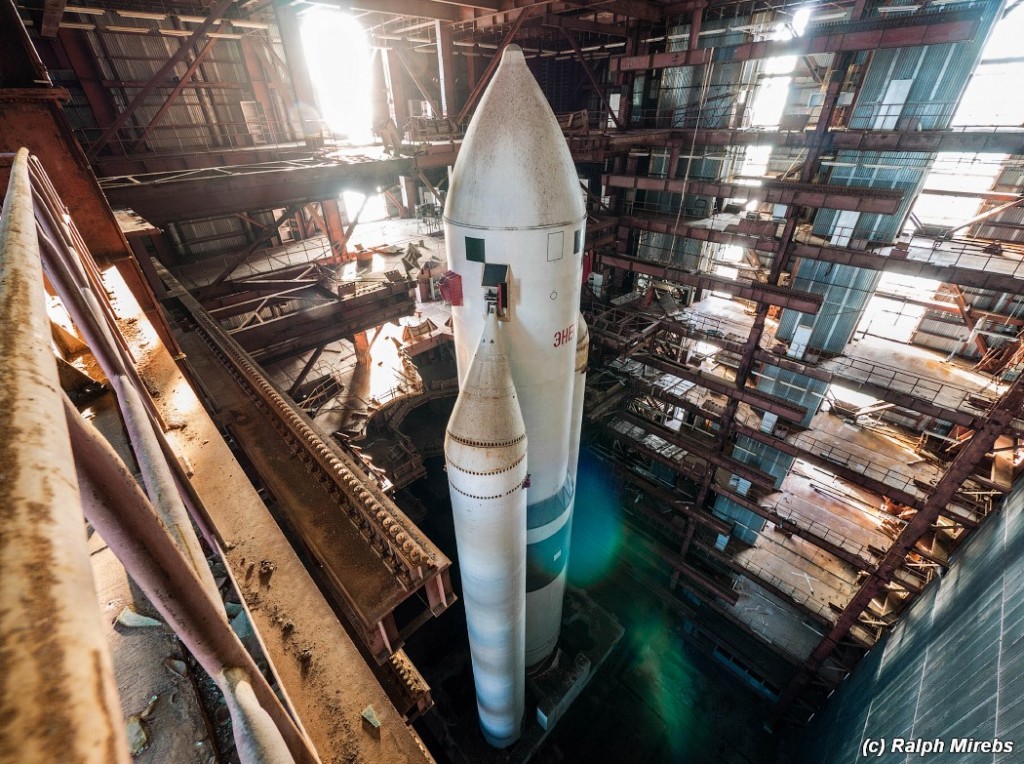Another Lockheed concept circa 1959 for a “space scooter.” It’s clearly meant to be some sort of “work pod,” but blasted if I can figure out the logic of it… two crew separated by an inconvenient distance, with one fully armored against the dangers of space, and one virtually fully exposed (and wearing a “space suit” little better than the pressure suits worn by 1950’s interceptor pilots).
This comes from a 1959 Lockheed-Georgia PR booklet, no further data was provided. It was described as a “Space Scooter,” which would indicate something akin to the Convair “Space Taxi” shown in US Spacecraft Projects #1. However, this looks like not so much an inter-spaceship crew transfer system as a “work pod” for the construction of spacecraft and space stations. The torus undoubtedly contains thruster propellant; possibly high-pressure gas for cold-jet thrusters.
A Rockwell illustration showing an almost-but-not-quite-final Space Shuttle design. The only obvious major difference between this design and actual Shuttle is the rounded dome on the nose of the ET. This *may* have been a cover over a de-orbit solid rocket motor, but if so it was a small one. Other changes include differences in the booster sep motors; this painting shows four nose BSMs in a straight vertical line and four tail BSMs in a straight vertical line. As built, the forward BSMs were in a 2X2 square array, while the at BSMs were arrayed around the nozzle. Some minor difference in thermal tile pattern on the forward fuselage of the Orbiter.
The full-rez version has been made available for $10-level patrons at the APR Patreon.
Just released today… an official “History of the Manned Orbital Laboratory” by Carl Berger of the MOL Program Office, 1970. This originally Top Secret history still has a number of blacked-out text redactions and, sadly, no illustrations in its 356 pages. I’ve only skimmed through it, but it looks to be an interesting read.
Direct link to the “History of MOL” PDF file
The table of contents:
Due to the contributions of APR Patreon patrons, over the past little while I have been able to acquire some useful aerospace history publications:
If you would like to help the cause, please consider signing up for the APR Patreon.
Here’s a presentation describing a number of European space transport concepts, including the HOTOL, Sanger II and Hermes spaceplanes, Automatic Transfer System and a few others. As a presentation, it is loaded with illustration. I have clipped out some of the better Hermes illustrations and included them below.
European Space Transportation System Projects since 1998
Much more aerospace stuff is available via the APR Patreon.
In the 1990’s, into the early 2000’s, NASA gave a few brief looks at Orion-style nuclear pulse propulsion. A few papers on the concept were published, but it does not appear that a great deal of real engineering effort was expended. Given the political impossibility of an Orion in the Clinton years and the diplomatic nightmare than an Orion would have been post 9/11, it’s hardly surprising that the NASA efforts were low level and apparently led to little.
Some artwork was produced. Generally computer generated, and generally reproduced at relatively low resolution, only a little can be gleaned from these pieces. The design shown below uses Transhab technology for the crew compartment and, unlike every known vintage Orion design, it has substantial radiator area. This presumably was for an internal nuclear reactor. If the Transhab used here is the same 8.2 meter diameter as the standard Transhab design, this indicates that the pusher plate is probably smaller than the 10 meter design.
I have added the full-rez version of this to the 2015-07 sub-folder of the APR Patreon “Extras” folder on Dropbox. What is depicted is a 1985 Martin Marietta design for an Unmanned Launch Vehicle, a Shuttle derived vehicle that replaced the Orbiter hanging off the side with an inline payload shroud up top and a small propulsion/avionics module that would have three SSME and two OMS engines, in much the same positions as the Orbiter engines. This would allow the booster to lift off from existing Shuttle facilities with minimal modifications. The P/A module would be a biconic lifting body allowing recovery and re-use. Not only would the P/A module go into orbit, but so would the external tank. Each flight of this vehicle would have the potential to orbit the shell of a fantastic space station.
This vehicle was described in greater detail in US Launch Vehicle Projects #2.
If you are interested in the high-rez version of this, it and many more are available to all $4 and up patrons at the APR Patreon.
A follow-up to the earlier photo set of Burans at Baikonur left to rot: a full -scale mockup of the Energia-M launcher. The Energia-M was a planned smaller two-booster version of the four-booster Energia used to launch the Buran orbiter… and, like the Buran orbiters, it has been left in place and is slowly rusting away.
